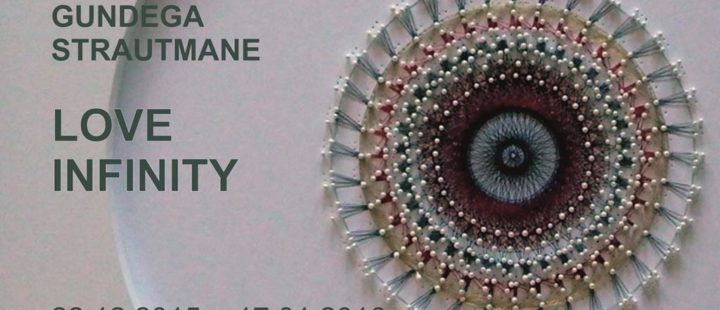Archive
Aija Meisters Pale Horses
- - 17.01.2016
The artist Aija Meister was born in 1939 in Daugavpils at the time when Europe was ruled by confusion and, like several other world-famous Latvian artists, as a refugee Aija arrived in the USA. There she studied art at the University of Wisconsin, gaining Master's degree in Arts, as well as visited Master Classes of the Polish-American abstract expressionist Jack Tworkov. Later, the artist drew experience and studied art in Europe. Aija Meisters is an excellent painter, sculptor and graphic artist. Her Artist Statement follows: Nele Zirnīte ORIGIN
- - 17.01.2016
Nele Zirnīte’s solo exhibition “Origin” is her dedication to all artists – members of the society “Oforta ģilde“ [Etching Art Guilde] – who like Nele continue to develop etching art and try to blow a new breath into this ancient technique, simultaneously keeping the traditions alive. STRONG WATER Etching Art Guild – 5
- - 17.01.2016
Etching is a technique of graphic art having a long-standing and rich history which goes back to the 16th century, but at present it continues to exist thanks to the artists who full of enthusiasm and obstinacy still continue working in this field. This is a demanding technique insisting that in order to achieve the desired result its users should be patient, precise and persevering, and technically masterful as well. Dzidra Ezeregaile THE SONG OF THE SUN
- - 17.01.2016
Dzidra Ezergaile (1926 – 2013) – a small, thin woman of very delicate build with a back bent by the load of years, but always wearing a good-natured, sincere and warm smile and having a radiant glance – she belonged to the generation of artists who prospered during the complicated post-war years. The artist went through a long, interesting and creative life, facing a lot of challenges and difficulties, but stubbornly and purposefully devoting herself to art. II International Textile Art Symposium FORTRESS MAN
- - 17.01.2016
For the second successive year Daugavpils Mark Rothko Art Centre organizes the International Textile Art Symposium. This time the theme of the symposium is “Fortress Man” - the theme which is both promising and offering various possibilities for developing it in creative works. DŽEMMA SKULME SUBSTANCE AND FORM. PATHOS AND RESIGNATION.
- - 17.01.2016
How does an artist act? Džemma Skulme slightly opens the door to her creative kitchen: “For example, while painting you have a feeling that you fail, fail and will never succeed. But you also know that there will be a moment and you will succeed. As if some forces come to help you to cope with everything. Gundega Strautmane Love infinity
- - 17.01.2016
Gundega Strautmane
Love infinity
Gundega Strautmane has studied textile art at the Experimental Textile Design Institute in Berlin Art University, the Art Academy of Latvia and Riga Technical University. She carries out textile projects in disciplines of art experimental design. In her art projects Gundega makes use of the Braille code and creates works which are perceivable for both the viewers with good eyesight and also visually impaired people.
Though works created by Gundega Strautmane may be considered as modernization of traditions, the ornament in them appears in a peculiar way, essentially differing from the traditions. The artist has employed Braille and transcribed in it phrases from Christian prayers, writing these phrases with the help of tangible beads. These clusters of bead signs are arranged in a symmetrical rhythm, both repeating the prayer text and creating an impressive decorative ornament. In the result, these works illustrate a classical move during which a somersault has been even done: first of all, the text has been made a three-dimensional physical structure. It can be read and its content is perceivable by touch only; repetitions and the ornamental arrangement of repetition clusters provide not only a literary but also a sensual-esthetic experience.
Art critic: Iliana Veinberga Janusz Golik. The Line of My Horizon.
- - 17.01.2016
Line, Colour, Symbol in the golik’s Graphic Work.
In Janusz Golik's "right place" exhibition, the pages of graphics at first glance could have seemed like posters. Clearly defined signs or symbols, on a just as poster-like smooth surface in stop-signal red or black colour, are set out at the centre of the composition planes. FEELING LATVIA. FEELING LATGALE.
- - 17.01.2016
The exhibition is the result of the project implemented by the Daugavpils Mark Rothko Art Centre and “Saules skola”, Daugavpils Secondary School of Design and Art. The aim of the project is to encourage youth participation in the formation of Latgale’s culture, as well as the development of their civic awareness and sense of belonging. Inese Lieckalniņa The Sound of Silence
- - 20.12.2015
Inese Lieckalniņa was born in 1954. She has studied art at Riga secondary school of Applied Arts (1970-1974) and at the Art Academy of Latvia (1974-1980). She is an active member of the society Graphic Art Chamber, graphic and stained-glass artist, and a participant of many graphic art exhibitions in Latvia and abroad. She has also organized several solo exhibitions. 









